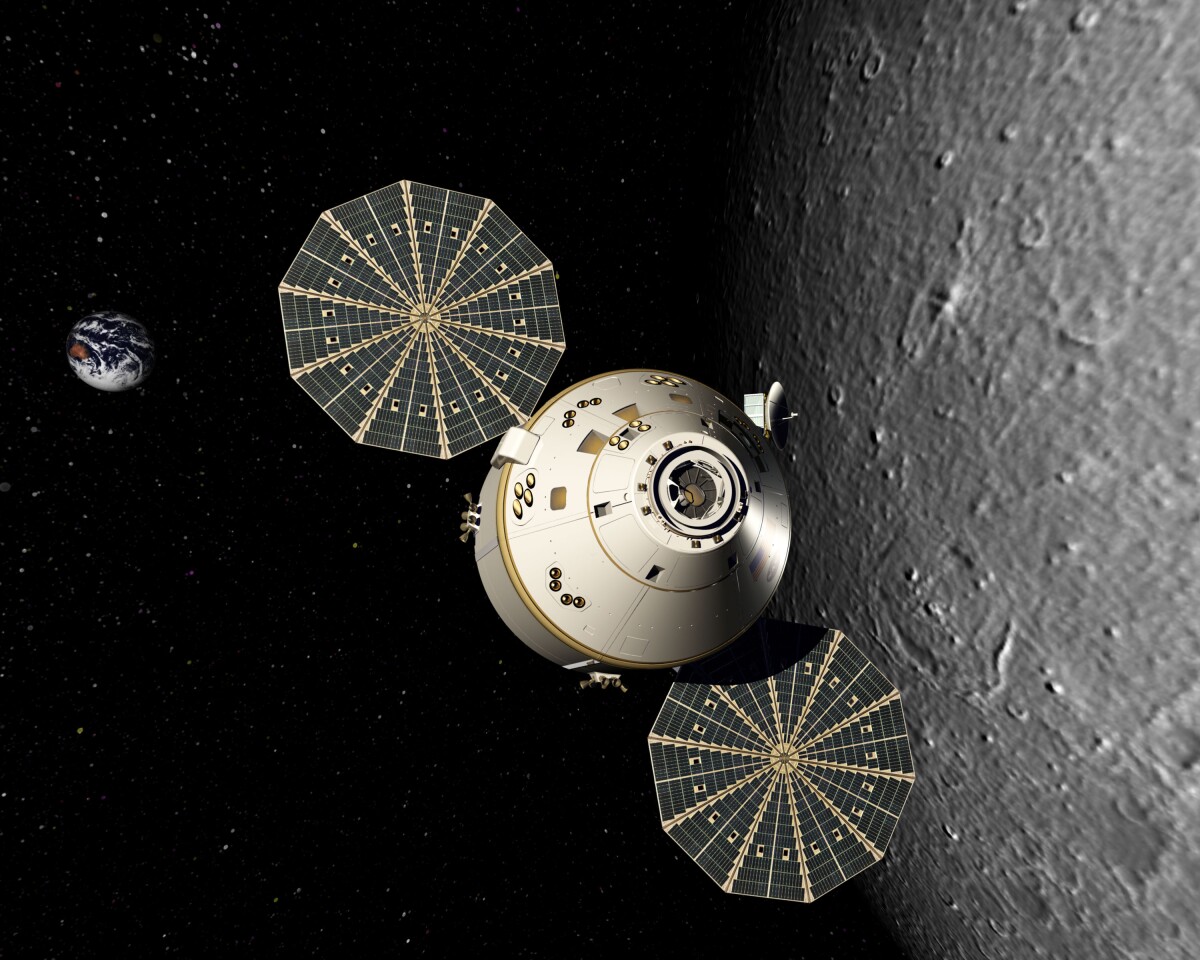The first Orion crew module has begun testing at Lockheed Martin's Space Operations Simulation Center (SOSC) in Denver, Colorado. This 41,000 square foot research facility will test the ability of NASA's next-gen multipurpose exploration spacecraft to safely fly astronauts through the severe environments of deep space. Orion will be phased in as the sun sets on the Space Shuttle Program with the first orbital flight test planned for 2013 and first crewed mission by 2016.
The Orion Spacecraft
While resembling its Apollo-era forerunners, Orion is designed to support long duration deep space missions of up to six months. It incorporates a crew module for crew and cargo transport, service module for propulsion, electrical power and fluids storage, spacecraft adapter for securing it to the launch vehicle, and a launch abort system that will significantly improve crew safety.In Denver, Orion will be unified with the heat shield and thermal protection layer and be subjected to environmental testing.
The crew module will also perform a series of simulated landing procedures at NASA Langley Research Center's new Hydro Impact Basin to test water landings.
"This is a significant milestone for the Orion project and puts us on the right path toward achieving the President's objective of Orion's first crewed mission by 2016," said Cleon Lacefield, Lockheed Martin vice president and Orion program manager. "Orion's upcoming performance tests will demonstrate how the spacecraft meets the challenges of deep-space mission environments such as ascent, launch abort, on-orbit operations, high-speed return trajectory, parachute deployment, and water landings in a variety of sea states."

Space Operations Simulation Center
SOSC is built upon a 1700 foot deep bedrock formation separated from local seismic disturbances. This foundation produces an ultra stable backdrop for testing precision instruments and accurate navigation systems needed for space vehicles. The multimillion dollar facility will conduct tests to ensure safe, successful human and robotic missions in space and throughout our solar system. The investigations will include rendezvous, docking and proximity operations, and tests on imaging, descent and landing systems. SOSC has showcased simulated missions to an asteroid and the International Space Station using laser and optically guided robotic navigation systems.The SOSC will test a new navigation and docking system, the STORRM (Sensor Test for Orion RelNav Risk Mitigation) on the upcoming STS-134 shuttle mission to the International Space Station. This test will conduct high altitude orbits and a high energy re-entry that mirror the environments of a deep space mission.
Looking toward the future
Lockheed Martin – the prime contractor for the program – has also been developing a master plan called Stepping Stones, increasingly challenging missions utilizing the Orion spacecraft. These mission scenarios include a mission to the Lagrangian Point over the far side of the moon in 2018, missions to two asteroids in 2019 and 2029, and a mission to the moons of Mars that would include robotic missions to the Martian surface in 2031-35."Our nation's next bold step in exploration could begin by 2016," said John Karas, vice president and general manager for Lockheed Martin's Human Space Flight programs. "Orion was designed from inception to fly multiple, deep-space missions. The spacecraft is an incredibly robust, technically advanced vehicle capable of safely transporting humans to asteroids, Lagrange Points and other deep space destinations that will put us on an affordable and sustainable path to Mars."
Check out Lockheed Martin's overview of the Orion crew exploration vehicle below:








